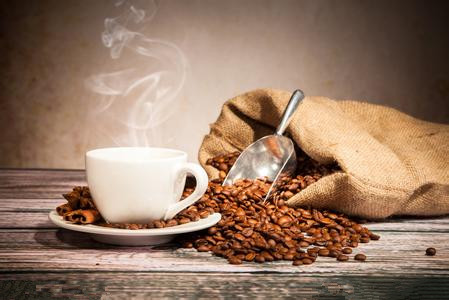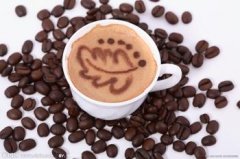Espresso is a popular coffee drink all over the world.
Espresso coffee is a strong type of coffee brewed by boiling extremely hot water under high pressure and grinding to a fine coffee powder. It was invented and developed in Italy in the early 20th century, but until the mid-1940s it was a drink made solely through steam pressure. He invented and commercialized the spring piston lever coffee machine, transforming espresso into the beverage we know today. The pressure used in the production process is usually 9 to 10 atmospheres or bar pressure.

Espresso coffee has a thicker texture than drip coffee, and contains more dissolved matter per unit volume than drip coffee; usually the supply is calculated in "shots." Espresso is chemically complex and volatile, with many components breaking down due to oxidation or temperature drop. One characteristic of properly brewed espresso is the presence of crema, a reddish brown foam that floats on the surface of the espresso. It consists of vegetable oil, protein and carbohydrates. Coffee cream has a combination of two elements, emulsion and foam colloid.
Through the short time and high pressure brewing process, the unique flavor of a cup of coffee is concentrated and expressed stronger than other brewing equipment. However, due to the short quenching time, the caffeine content is relatively small. Espresso is often used as the basis for coffee drinks that are blended with other ingredients (such as milk or cocoa powder), such as lattes, cappuccinos, macchiato, and mocha coffee, without over-diluting the coffee ingredients.
Espresso coffee, main categories:
Cappuccino is a 1/3 mixture of espresso, hot milk and whipped milk. The milk foam on top keeps the coffee warm and fragrant.
Latte, Italian for fresh milk, literally means 2/3 hot milk and 1/3 espresso to make latte.
Macchiato, Italian for "stain." There are two main types, coffee macchiato, also known as lungo, Italian for "long", referring to the addition of a small amount of milk to espresso as a "stain"; and milk macchiato, also known as cortato, Italian for "short", referring to the addition of a small amount of espresso to milk as a "stain".
Mocha coffee, 1/3 espresso mixed with 2/3 distilled milk, made with chocolate, is a variant of latte, which tastes a lot better with more chocolate or cocoa.
Moccaccino is similar to mocha, adding cocoa or chocolate to a latte, except that the mocha flavor is reduced by adding more hot chocolate.
American coffee, espresso with plenty of hot water, tastes softer.
Espresso coffee has the richness of Italian coffee culture, reflecting the accumulation and retention of its culture. Unlike North American instant coffee, Italians have always retained a wide variety of coffees and their making techniques. When ordering coffee, they reported different coffee names, and all kinds of coffee were served in containers of different sizes!
Important Notice :
前街咖啡 FrontStreet Coffee has moved to new addredd:
FrontStreet Coffee Address: 315,Donghua East Road,GuangZhou
Tel:020 38364473
- Prev

Why coffee is one of America's most popular drinks
Over the years, I have written extensively about the social and environmental impact of coffee, one of the world's most popular drinks and one of the world's most traded commodities. I'm currently writing a book about coffee (contact me if you're interested), but I've been hesitant: I don't know how many coffee consumers really want to know.
- Next

Research report on the Forecast and Investment Strategy of China's Coffee Industry from 2012 to 2016
Against a backdrop of rising coffee use in major emerging markets, particularly in Asia and South America, global coffee demand rose 2 per cent year-on-year in the 2011-2012 fiscal year. During the 2012-2013 fiscal year, global coffee production held steady at around 146 million packs (60kg each). In the past ten years, coffee shops have sprung up on the streets of major cities in China, especially
Related
- Beginners will see the "Coffee pull flower" guide!
- What is the difference between ice blog purified milk and ordinary milk coffee?
- Why is the Philippines the largest producer of crops in Liberia?
- For coffee extraction, should the fine powder be retained?
- How does extracted espresso fill pressed powder? How much strength does it take to press the powder?
- How to make jasmine cold extract coffee? Is the jasmine + latte good?
- Will this little toy really make the coffee taste better? How does Lily Drip affect coffee extraction?
- Will the action of slapping the filter cup also affect coffee extraction?
- What's the difference between powder-to-water ratio and powder-to-liquid ratio?
- What is the Ethiopian local species? What does it have to do with Heirloom native species?

